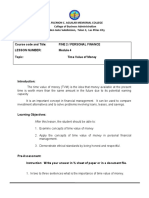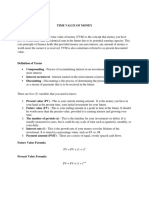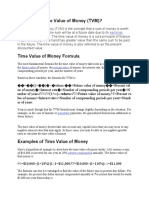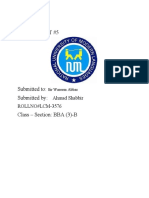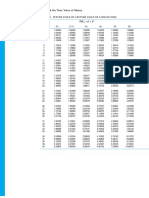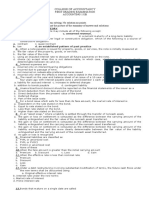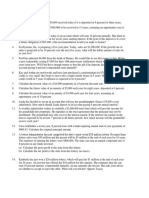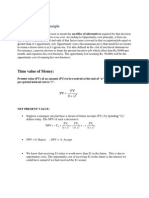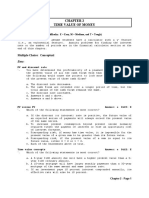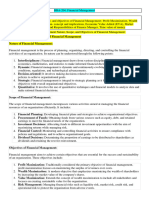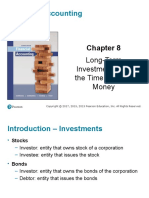ASSIGNMENT NO.
3 FIMA
1. What does the concept of the Time Value of Money (TVM) mean?
Answer: The concept of the TVM is a cornerstone of financial decision-making.
2. What is Future Value in financial decision-making?
Answer: Future value (FV) refers to the value of a current sum of
money at a specific point in the future, assuming it earns interest
or returns over time.
3. What is Present Value used for in finance?
Answer: Present value (PV) represents the current worth of a future
sum of money or stream of cash flows, given a specific discount
rate.
4. How does compounding affect the Future Value of money?
Answer: Compounding significantly impacts the Future Value (FV) of
money by increasing the principal amount over time. It involves
earning interest on both the original principal and any interest
added from previous periods, resulting in exponential growth. The
frequency and duration of compounding influence future value
growth.
5. What is the formula to calculate Present Value?
Answer: PV=FV(1+r)nPV = \frac{FV}{(1 + r)^n}PV=(1+r)nFV
where FV is the future value, r is the discount rate or interest rate
per period, and n is the number of periods until the payment or cash
flow is received. The present value decreases as the interest rate
increases and as the time period until receipt of the money
lengthens, reflecting the opportunity cost of waiting.
6. Why is a dollar today worth more than a dollar tomorrow?
Answer: The time value of money explains that a dollar today is worth
more than tomorrow due to its potential for investment and future
value. Inflation, risk, and uncertainty in future payments also
contribute to this value. People prefer liquidity and flexibility,
making today's money more valuable.
7. What is discounting in the context of the Time Value of Money?
Answer: Discounting in the context of the Time Value of Money (TVM) refers to the process of
determining the present value of a future sum of money.
8. What financial decision-making method uses Present Value to assess investments?
Answer: Net Present Value (NPV) method uses Present Value (PV) to assess investments.
9. How do you calculate the Future Value of an investment with annual compounding?
Answer: The calculation of future value involves compounding, which
is the process of earning interest on both the initial principal and the
�accumulated interest from previous periods. The formula for calculating
the future value of a single sum is:
FV=PV×(1+r)nFV = PV \times (1 + r)^nFV=PV×(1+r)n
10. What is an annuity in terms of the Time Value of Money?
Answer: In the Time Value of Money, an annuity is a series of equal payments made at regular
intervals over a specific period.








